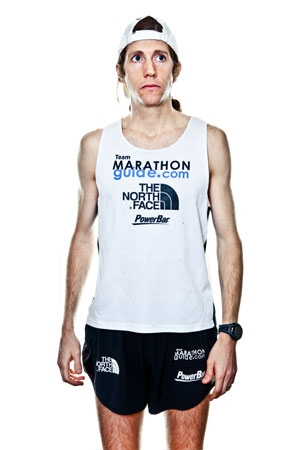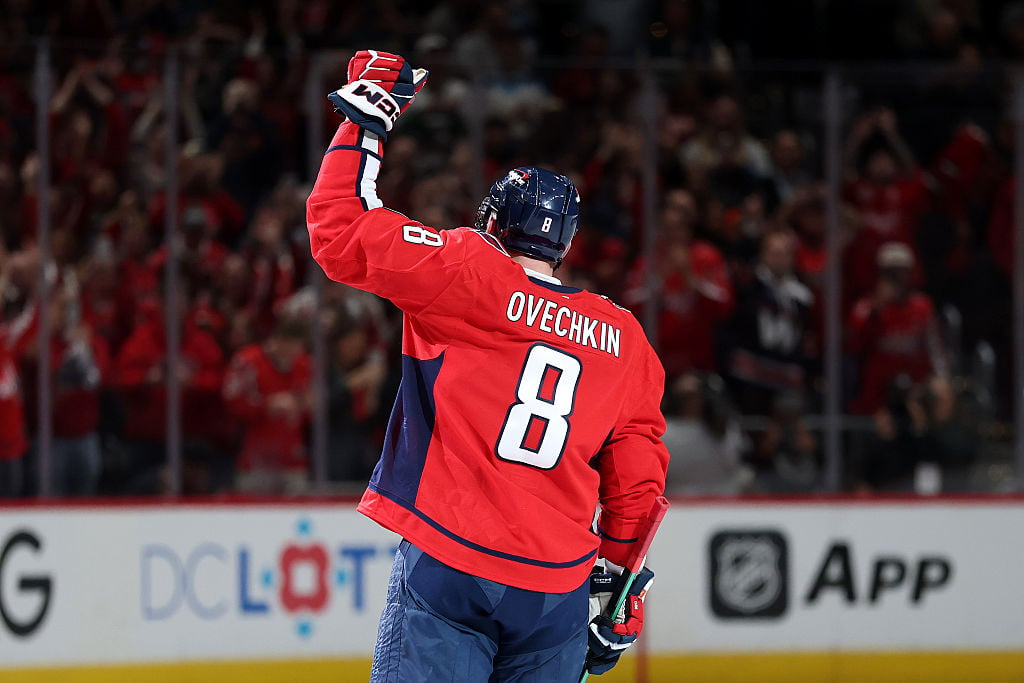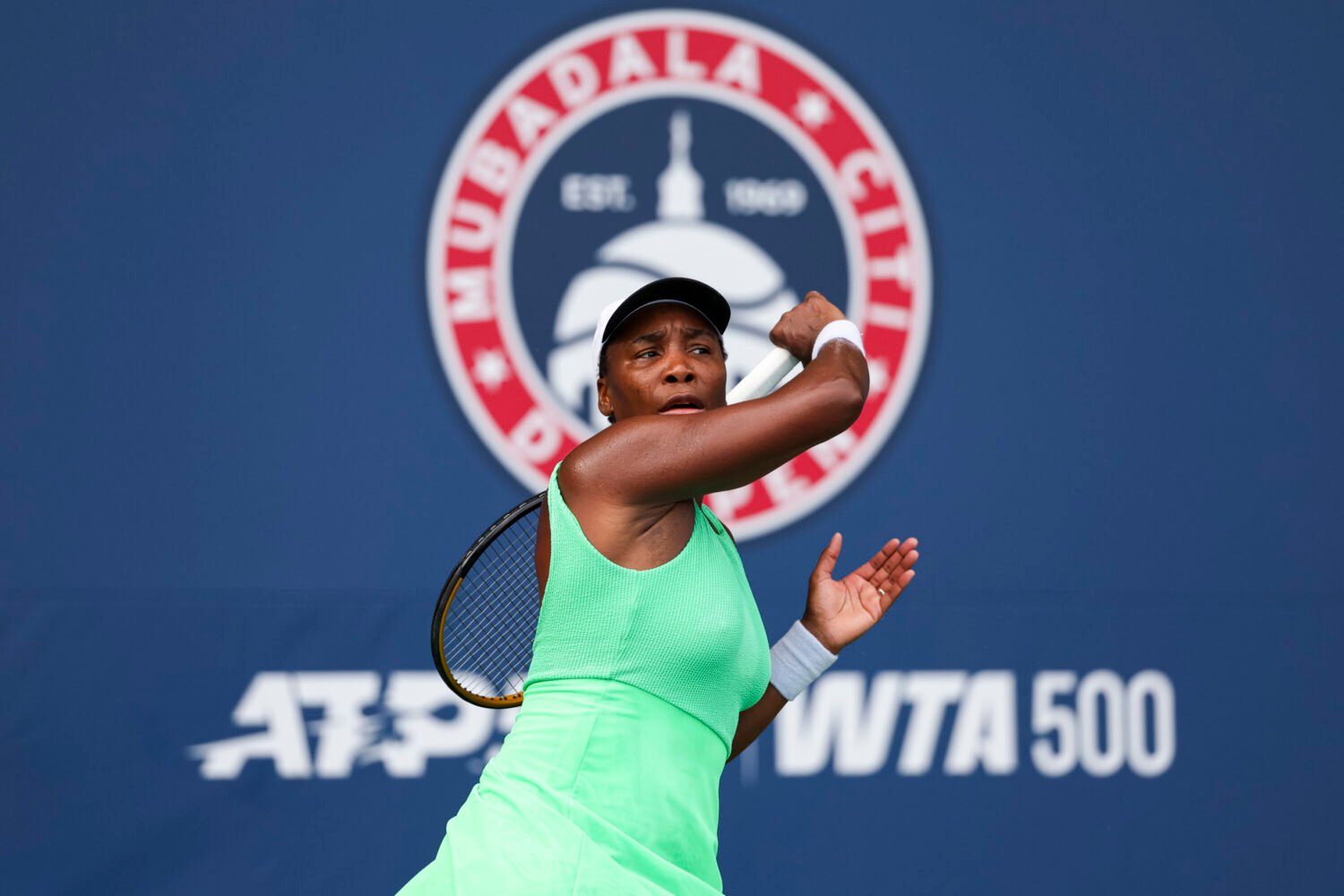
Chances are Michael Wardian has already logged more miles on foot this year than most people will by December.
The ultra-marathon runner capped off his fifth race this year—more than 140 miles total—last Saturday at the SunTrust National Marathon. For the fifth time in six years, Wardian was first to cross the finish line, beating out a field of 50 elite runners with a time of 2:23:01.
Though a win at home never hurts, the Arlington native was unable to achieve his bigger goal: qualifying for the Olympic trials. “So I guess I failed even though I won,” Wardian says.
He has until January 2012 to shave his time down to two hours and 19 minutes—and a dozen marathons this year to go. He’ll run two races between April and May in South Africa, a total of 90 miles, and one week later he’ll run the 50-mile North Face Endurance Challenge. In September, he’ll try to win the 100K World Championships in the Netherlands. (A third-place finish last year wasn’t enough.)
While Wardian is undeniably a serious athlete, he’s not a professional runner who has the luxury of running full-time. That means he’ll be unable to travel a month in advance to prepare for a 135-miler in Death Valley; he’ll have to acclimate in Thomas Jefferson Community Center’s sauna instead. It also means somehow getting in 15 to 20 miles a day, in between working a full-time job as an international ship broker and helping his wife, Jennifer, take care of their four- and two-year-old sons.
An average day for Wardian goes something like this:
4:45 to 5:30 AM: Get up and run for an hour or an hour and a half on the treadmill. Once a week, he’s on the track: “When I get home, my kids wake up and I make them cereal. They hang out with me, and we watch Power Rangers. I let my wife sleep in until 7:15 or so and then I head to work.”
11:10 to noon: “I try to get out for a lunch run, which is about 45 to 50 minutes, but it can go as long as 60 minutes.”
By the end of the day and about 20 miles later, Wardian says he’s just like any other dad: “I do the whole bed, bath, read-stories thing.” But once his kids are tucked in, he might try to fit in another round on the treadmill or spinner bike.
“It’s a tight schedule,” Wardian says, “but it’s the only way to fit it all in.”
It’s not a life he ever expected. Most elite runners get into the sport at a young age, but Wardian didn’t hit his stride until college. As a lacrosse player at Michigan State University, Wardian ran only to stay in shape. It wasn’t until 1995, when he saw photos from the Boston Marathon, that he thought, “Cool—I want to do that.”
He qualified for the world’s oldest annual marathon at his first race, the Marine Corps Marathon. “Then I went to Boston and I just got hooked on running,” he says. “People said, ‘You can’t run three marathons in a month.’ So I did.”
By 2004, Wardian had qualified for the Olympic trials, and four years later he won the US National Championship in the 50K. For the past three years, he’s been on the top tier of the podium.
Though still not a pro, the six-foot, 139-pound runner has learned a lot from his first few years in the running world: (1) Don’t overdo it on carbs the night before a race: “I used to eat like five pounds of pasta, and the next day I could barely move.” (2) When you’re running a multi-day race in the Sahara Desert, don’t just pack mac and cheese: “By the second day I never wanted to see mac and cheese again. By the end of the race I was like, ‘I’ll eat a table leg!’ ” (3) Number your running shoes: “I go through 30 to 40 shoes a year: trainers, flats, and racing shoes. I have so many of the same kind I have to number them, because eventually they all start to look beat up and old and have mud caked on them.”
But most important, says Wardian, he’s learned to constantly set goals for himself. It all harks back to that original goal to run a marathon in 1995. “I started running to stay in shape and stuck with it,” he says. “I decided to start setting goals and it kind of kept progressing. And I’m still trying to progress.”
Sixteen years later with 150 marathons under his belt, what’s another 4,000 miles?
What He Likes
Wardian shares some of his favorite trails, gear, and more.
Running trails: Although Wardian is a treadmill fiend—he broke a world record for fastest marathon run on a treadmill—he also likes to hit some nearby trails when he gets the chance. Wardian often runs Shirlington’s WO&D trail to Purcellville, and he likes the Potomac Heritage Trail, which goes for 11 miles along the river. DC’s Rock Creek Park is another favorite, and the more difficult trails at Great Falls Park in Maryland are worth the trip.
Running gear: Wardian likes wearing running shoes and clothes by the North Face. As a sponsored athlete, he has some input when it comes to its product design. A fellow teammate helped create the North Face’s Men's Animagi Jacket, which combines a long-sleeve zip-up and vest together into one.
Pre-marathon meal: A big glass of water with oatmeal and honey and a PowerBar. Wardian has been a vegetarian for 17 years. He’ll stock up on bananas, apples, pears, mangoes, and grapes at Whole Foods.
Post-marathon meal: “I’m usually not hungry for a while, and then I get waves of hunger like a pregnant person,” Wardian says. He’ll crave random foods but usually something salty. “It depends on how hot and hard the race was.”
Subscribe to Washingtonian
Follow Washingtonian on Twitter
More >> Health | Top Doctors | Well+Being Blog

















